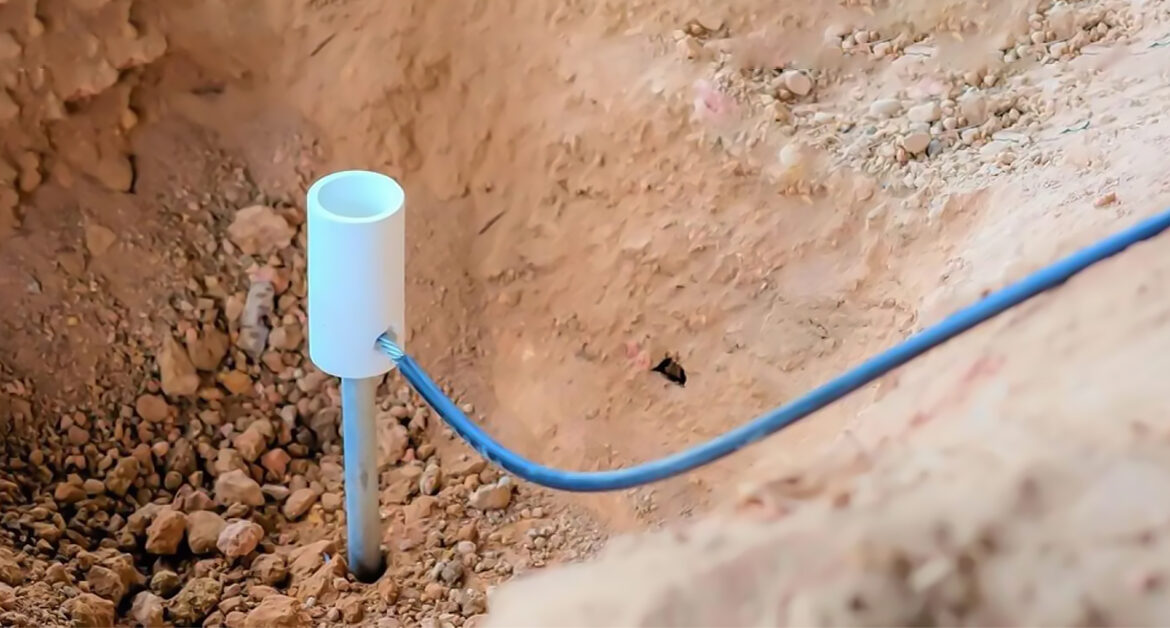Electrical grounding is an important concept in electricity that refers to the practice of connecting an electrical system to the earth or to a common reference point, such as a buried metal rod.
This process creates a safe path for the dissipation of unwanted electrical currents, such as those resulting from short circuits or lightning strikes. This protects equipment and personnel from the risk of electric shock and fire.
Therefore, electrical grounding is essential to ensure the safety and proper functioning of electrical systems. It provides a low-resistance path for unwanted current flow, minimizing the damage and dangers associated with electrical faults.
Want to learn more about this topic? Then stay with us.
What is the importance of electrical grounding?
Electrical grounding is essential for the safety and reliable operation of electrical systems. Learn about its benefits.
- Personal safety: Grounding prevents the buildup of electrical charges on equipment and structures. Therefore, it reduces the risk of electric shocks, which can be fatal in some cases.
- Fire protection: It provides a path of least resistance for the dissipation of short-circuit currents. This helps prevent wires and components from overheating, significantly reducing the risk of electrical fires.
- Equipment protection: Grounding helps prevent damage to sensitive devices and appliances, such as computers and electronic equipment. It diverts unwanted currents to the ground instead of allowing them to damage the devices.
- Effectiveness of protection systems: surge protection systems (such as lightning rods) depend on grounding to function properly, diverting atmospheric discharges to the earth;
- Electrical system stability: Grounding helps keep voltage within acceptable limits. This contributes to the stable operation of electrical systems and prevents power outages.
>> You may also like to read: the importance of electrical grounding in the property
How to size cables for electrical grounding?
Sizing electrical grounding cables is a critical part of electrical design, as it ensures the effectiveness of the protection system. To properly size grounding cables, several factors must be considered, including:
- installation power;
- section of electrical conductors;
- grounding scheme adopted on site.
An important tool to facilitate this process is the NBR 5410, which provides guidelines and reference values for sizing grounding system components. Therefore, the NBR 5410 standard is essential to ensure compliance and safety of electrical installations.
It's important to emphasize that the tables and recommendations in NBR 5410 simplify the sizing process, eliminating the need for complex calculations.
However, it is essential that a qualified electrician familiar with the standard performs the sizing to ensure the safety and effectiveness of the electrical grounding system.
Cables suitable for electrical grounding
The grounding electrodes (which is the part that is buried and connected to the copper alloy rods) are interconnected by bare copper cables, although it is also possible, according to NBR 5410, to use bare copper or steel tapes and bars.
In the above-ground section, called equipotential bonding, bare or insulated copper cables can be used. All conductors, including bare copper, 750 V insulated, and 1 kV cables, are suitable.
Grounding system errors
It is important to emphasize that some serious errors can compromise the grounding system.
Errors in the underground grounding system (ground electrode):
- Use of bare copper cables with a smaller cross-section than necessary (50 mm² standard);
- Incorrect use of the utility company's grounding instead of the building's exclusive grounding;
- Use of inappropriate connectors to connect buried and above-ground components.
Problems in equipotential bonding (above ground part):
- Lack of equipotential connections in essential areas, such as door/window frames and metal pipes;
- Partial or total absence of protective conductors (ground wire);
- Protective conductor with inadequate cross-section (undersized).
You can find electrical grounding material at Trifásica
At Trifásica Elétrica, you'll find all the materials you need for your electrical grounding project. We offer high-quality products to ensure a safe and reliable electrical installation.
Additionally, our technical team is available to assist you both pre- and post-sales, ensuring you have the support you need at every stage of the process.
Contact us today and let's discuss your needs.
Contact our sales team on one of our channels.Follow our social media: Facebook, Instagram, LinkedIn and YouTube.


[…] consists of a number of components, including pickup rods, conductors, grounding electrodes and […]